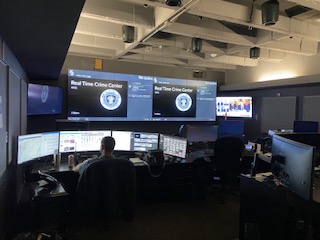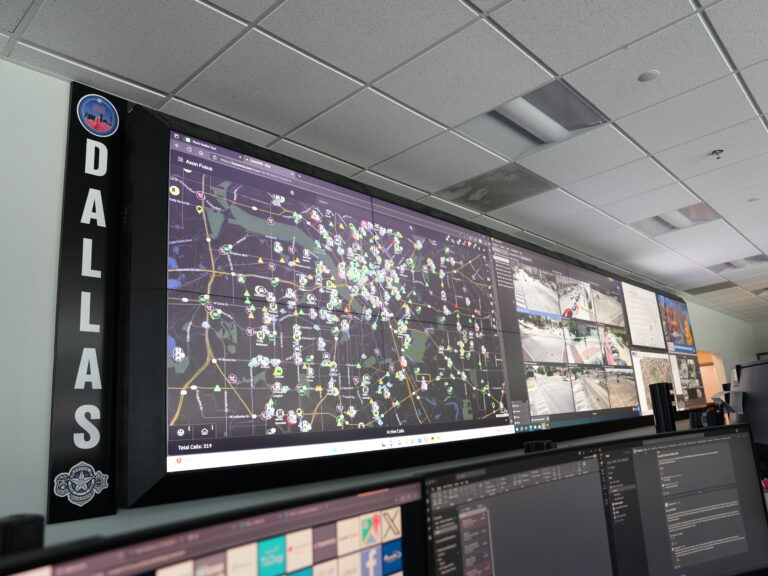The header image was provided directly by the department for official use. This report was compiled by TechHalo based on an interview with Sergeant Joe Shipp of the Fort Worth Police Department in Texas.

Read full Article
Program Overview
Fort Worth PD launched its Real-Time Crime Center back in 2015 — but suspects didn’t stop at city lines. So they built TRIDENT: a regional intel network that lets nearby agencies plug into Fort Worth’s live system. Partner departments can post up at the center and get real-time support during major ops, all running through one shared tech stack.
Technology Stack
Video Management
-
Milestone for camera feeds and analytics
-
PTZ and traffic cameras across the city
License Plate Recognition (LPR)
-
Flock Safety for:
• Automated LPR
• Gunshot detection
• Third-party camera integration
• Real-time alerts for stolen vehicles and suspects
Situational Awareness
-
Flock OS maps for incident visualization
-
Motorola CommandCentral Aware to track officers and vehicles live
-
Motorola’s floor plan overlays help guide officers inside buildings during critical events (e.g., active shooters)
Body and Vehicle Cameras
-
Axon body-worn and dash cams stream live to RTCC
-
Integrated with Evidence.com for digital case management
Data & Intelligence Tools
-
Clear, TLO, and FirstTwo for public records
-
Used to locate suspects, verify addresses, and connect phone numbers or license plates to individuals
Implementation
RTCC currently supports up to five operators with plans to expand to 23–24 in the new facility.
Initial outreach to 40 agencies:
-
23 have joined
-
13 are still evaluating
-
4 potential declines (some due to plans to build their own RTCCs)
Agencies are encouraged to participate by sending personnel and aligning their tech platforms with Fort Worth’s for seamless integration. The system provides immediate tactical support, even for agencies without RTCC personnel onsite.
Training
Officers can begin with basic tools — a computer, a radio, and access to local reports — to mimic RTCC functions before full implementation.
RTCC-trained personnel learn:
-
How to monitor radio traffic and identify critical incidents
-
How to use analytics and camera feeds to support field operations
-
How to leverage multiple data platforms for rapid suspect identification
The focus is on real-time decision support, enabling fast, safe, and accurate responses.
Impact and Results
-
Solved a road-rage homicide and arrested the suspect within 52 minutes
-
Multiple homicides closed within hours, compared to days in the past
-
Violent crime rates, particularly personal violence, have declined since RTCC integration (though specific metrics weren’t provided)
-
Faster arrests improve evidence recovery — from weapons and clothing to DNA and trace evidence — strengthening court cases
-
Acts as a force multiplier for smaller agencies during high-stakes events
Funding
-
Primarily funded through Fort Worth’s Crime Control Prevention District (CCPD), supported by a ½ cent sales tax
-
Additional support from the General Fund for staffing
-
Federal and state grants help expand technology and infrastructure
Key Use Cases
-
Live Monitoring of Foot Chases: RTCC tracks officers’ locations, suspects’ movements, and surrounding areas in real time
-
LPR Alerts: RTCC can track stolen vehicles or wanted suspects within moments of an alert
-
Building Entry Support: Operators guide officers inside schools or buildings using live video and floor plans
-
High-Speed Response: Incidents resolved quickly, often within the hour, reducing threats to the community and officers
Quotes from Sgt. Shipp
“We knew this had to be more than just cameras on a wall. It had to be about real-time, boots-on-the-ground decision-making.”
”“We’re helping smaller agencies double their department’s size when it matters most.”
“Faster arrests mean better evidence — and that makes a prosecutor’s job easier.”
“You don’t need $6 million to get started. One person with the right access can change outcomes immediately.”
“I can think of five or six homicides that have happened where we found the person and had them in custody in hours as opposed to days.”
Program Update Notice
This Tried + Tested post reflects verified details as of July 2025. Program results and tech use may shift over time. While we spotlight major updates when they happen, older posts aren’t monitored continuously.
Stay informed.
TechHalo Newsletter
Weekly updates on what’s new, what’s working, and what’s changing in law enforcement tech.


